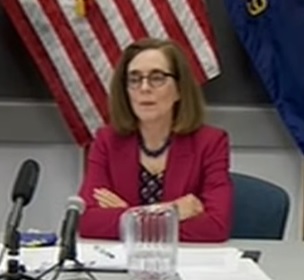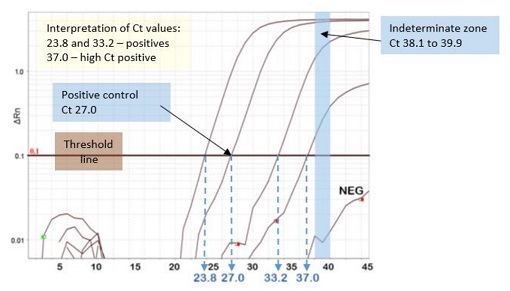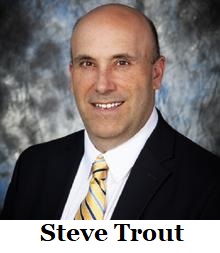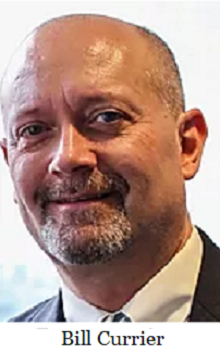
On this day, August 18, 2020, protesters lit fires, threw rocks and smashed windows at county government offices in Portland, prompting police to declare a riot, after weeks of "mostly peaceful" leftist demonstrations.
 Post an Event
Post an Event
| Benton County Republicans’ Private Fundraising Event, “Bent-on Boots and Bling” with Trey Taylor |
| Friday, September 5, 2025 at 5:00 pm |
| Featuring Trey Taylor
Music Private Event
Friday, September 5, 2025 5:00-5:30 pm VIP Reception
5:30-8:00 pm Heavy Appetizers,
Auction, Concert
Red: $750 VIP Reception
Front Row Table Sponsor
White: $500 Table Sponsor
Blue: $50 per person
Limited Seating. Get Yours Now!!!
Support Local
Dress up: Bling, Cowboy, Patriotic Benton County Republican
FUNDRAISER
www.BentonGOP.org
Get your tickets today at:
https://www.bentongop.org/event-details/benton-county-republicans-fundraiser/form
About Trey:
Trey is the youngest African American Man in Country Music History. The Denver Post wrote
"It's impossible to miss his enthusiasm. With a fondness for cowboy boots, gaudy colors and dazzling jewelry, Trey Taylor could stand toe to toe with any of the Pop, Country or even Rap
contemporaries of his generation.“ |
| Trysting Tree Golf Club, 34028 NE Electric Rd., Corvallis |
Revenue could offset COVID hits to revenue
After a recent
audit by Oregon Secretary of State's audit Director Kip Memmott, titled "Oregon Has an Opportunity to Modernize Groundbreaking Bottle Bill on its 50th Anniversary," the Oregon Liquor Control Commission has agreed and accepted two recommendations, in order to increase State revenue, and protect the environment.
Nathan Rix, the Deputy Director of the OLCC, responded to the audit in a November 4th letter addressed to Memmott stating
"OLCC does not have the authority to make the suggested changes, but we agree that OLCC has a role to play assisting with this process."
The first recommendation of the audit was "In order to comply with state statutes, we recommend that OLCC work with entities under regulatory authority to ensure they are complying with existing unclaimed property laws"
Essentially the Secretary of State's office was used to conduct an audit into new revenue streams for the State. In an unprecedented request the audit Director Memmott asks the OLCC to comply with state statute regarding unclaimed property. During the 2019 session,
SB 454 quietly passed through the legislature with a "relating to" clause, giving the Treasurer and the Executive branch full administrative powers over all "unclaimed property". The official summary of the bill was "Transfers administration of Uniform Disposition of Unclaimed Property Act, unclaimed estates and escheating funds from Department of State Lands to State Treasurer."
It also changed the process individuals would need to go through in order to claim their property, giving the state sovereign status and constitutional rights to unclaimed property, while the owner in question must appeal within ten days (of notice), to an administrative court.
In light of COVID-19 bottle return shutdowns, due to sanitation concerns, and limits of 140 bottles (a mere fourteen dollars) per day, many Oregonians have given up on returning their cans. Frustrated Oregonians have complained on social media, and no doubt to lawmakers. At times, lines have wrapped around the building at bottle drop sites, as unemployment is at an all time high, returning cans has been a source of income, few can live without.
Now the State has entered into this equation, vying for a piece of the pie, and has suggested an additional five cent increase, if bottle returns remain below 80%, for two consecutive years. The report, the audit, nor the response addresses an increase to bottles returned per day. The response by Rix does however, address working with private industry to educate store employees, and make it known that preventing bottle returns is illegal. It's unclear how OSHA, or the Governor might affect future bottle return site closures. Just this week Oregon Governor Kate Brown issued another order for a "two week pause", to 11 out of 36 Oregon counties.
50 years ago Governor Tom McCall began the iconic bottle bill, which has led the nation, incentivizing good stewardship and environmental consciousness. Today Oregon is considering adding items to the list of refundables. After recently increasing taxes by 800% on wine and liqueur, Oregon could soon see a deposit on its already taxed, wine bottles, and liquor containers.
It's also unclear if public comment, or stakeholder input will be accepted prior to implementing these new recommendations.
--Breeauna Sagdal| Post Date: 2020-11-11 17:05:01 | |
Intended to help those affected by Coronavirus Lockdowns
The legislative Emergency Board has just approved more than $128 million to
help Oregonians impacted by the ongoing COVID-19 pandemic. This includes funding for
childcare providers, Oregonians in need of shelter, small businesses, long-term care providers
and victims of domestic and sexual violence.
“I want to thank Reps. Marsh and Keny-Guyer, as well as numerous advocates who pushed for
this funding,†House Speaker Tina Kotek said. “This funding comes at a critical time as COVID19 cases continue to spike in Oregon. As winter approaches, it’s particularly important we passed
additional funding to help people without permanent housing. We’ve been facing a statewide
shelter emergency for some time and the pandemic has made the situation even more dire. We
have a lot of work ahead of us to solve this emergency but it's an important step."
The Emergency Board approved $35 million from the state’s Emergency Fund to support the
Project Turnkey Statewide Pandemic and Homelessness Response. The Oregon Community
Foundation will use funding to support the acquisition, retrofitting and potential operation of
hotel and motel properties to be used as emergency shelter. This funding is in addition to $30
million the Emergency Board approved on October 23 to begin Project Turnkey in wildfireaffected areas.
The Emergency Board also approved the following allocations from the state’s share of federal
funds available through the Coronavirus Relief Fund:
- $45 million for Childcare Provider Assistance to support the increased costs facing
childcare providers facing economic and operational challenges as a result of the
COVID-19 pandemic.
- $20 million for a third grant to the Oregon Community Foundation for the Oregon
Worker Relief Fund, which will make additional payments to workers who are ineligible
for wage replacement payments from traditional unemployment insurance programs.
- $20 million to provide additional financial assistance to small businesses economically
impacted by the COVID-19 pandemic. The board previously allocated $25.6 million for
COVID-19 Emergency Business Assistance in July.
- $5 million to help cover long term care provider costs for routine COVID-19 staff testing.
- $2.4 million for one-time COVID-19 baseline testing of long term care facility staff and
residents.
- $1 million to support victims of domestic and sexual violence. The COVID-19 pandemic
has been a catalyst for increased domestic and sexual violence. The board previously
dedicated $2 million to support victims in April.
Despite all the government aid, the people of Oregon would ultimately just like to go back to work.
--Ben Fisher| Post Date: 2020-11-11 10:30:10 | Last Update: 2020-11-12 10:34:36 |
Temporary outdoor coverings and heating to support social distancing
In the wake of Oregon expanding workplace rules to combat the spread of COVID-19 to May 4, 2021, Salem City Council has approved $200,000 for grants available to businesses needing temporary outdoor coverings and heaters to meet social distancing requirements during the winter months. Grants of up to $10,000 are available to eligible businesses within the city limits of Salem. Grants may be used to help purchase or rent equipment during the COVID-19 pandemic. Businesses must apply on the
City of Salem website between Nov. 10 at 12:00 noon. and Nov. 17 at 5:00 pm.
Businesses must certify that federal funds were not used for the same purpose. The grant also requires that businesses have a receipt from a recent tent/heater purchase or a bid for the purchase or rental of a temporary outdoor coverings/heaters and describe how the funds will help maintain or grow their business through the winter.
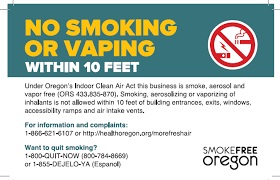
“We know that many local businesses have relied on outdoor space to meet social distance requirements and increase seating capacity. This grant funding is intended to help our businesses through the winter months,†said Salem Mayor, Chuck Bennett.
Grant program information and applications are available on the City of Salem website. Grant applications open Tuesday, Nov. 10, 2020 at 12:00 noon and closes Tues., Nov. 17 at 5:00 pm If applications total more than the funding available decisions will be made via lottery.
For more information, you can visit the
grant information page, email
salemgrants@cityofsalem.net, or call 503-540-2480 or 503-540-2425.
--Donna Bleiler| Post Date: 2020-11-10 19:30:33 | |
The complaintocracy works fine. Except when it doesn’t
This spring and this fall brought to us once again, the great American tradition of yard signs and field signs in political races.
Whether stuck in the ground or waved to passing cars on a busy street it’s a grand way for
Yamhill County residents -- indeed, all Oregonians -- to exercise their first amendment rights. However, McMinnville city officials changed all of that this year for the general election. As in past years, Republicans showed support for their candidates by erecting their usual signs with gusto. With few exceptions, their opponents, smarting from defeat in the primary, chose this time not to compete and sat out the sign competition. Instead they chose to complain, as was the case
elsewhere in Oregon.
When asked why the sudden change to time honored practices in the sign competition city compliance officer Nic Miles said “we only act if there are complaintsâ€. With no previous complaining until now the city was rusty on knowing its own codes. Their
webpage on signs literally has more disclaimers than actual information. 4x4 field signs inside the city limits were quickly ordered removed only to be deemed within the city code upon further review. Planning Director Heather Richards was called to the front lines of this debacle. That wasn’t enough fire power to solve this crisis and so the city attorney gave it a shot. After a couple of tries she finally figured it out. Director Richards wasn’t clear on just where the city boundaries were either and was reversed a second time.
Again, signs came down only to return to their former positions. Coincidence or not? Concerned about a credible conservative challenger, City Manager Jeff Towery called in Mayoral candidate Heidi Parker -- generally favored by Republicans -- and spent 30 minutes explaining to her how well he does the job. His anxieties were relieved when the challenger suffered a narrow loss. Towery wasn’t the only anxious party.
In mid-year incumbent councilors passed a new code limiting campaign funds received from a PAC to $1,000 -- which appears to have been made legal by
Measure 107, which passed in November. If more is received the donor must be identified on all campaign materials. Oh, those pesky challenges to status quo at McMinnville City Hall.
--Tom Hammer
| Post Date: 2020-11-10 17:44:19 | Last Update: 2020-11-10 18:38:29 |
Coast and valley see frigid temps
The National Weather Service in Portland issued the following Record Report on Monday. Note that records go back to the 19th century at most stations. And as meteorologist Dr. Roy Spencer pointed out, we still have a few months to go before the La Nina cold really takes hold.
Once the cold air mass over Western Oregon dried out, under clear skies, atmospheric carbon dioxide was not able to keep us warm.
Noted climate realist, Dr. Gordon Fulks said, "Perhaps Governor Brown needs to call Professor Phil Mote at OSU to find out what is going wrong with his climate theories. Could it be that CO2 is not a very important greenhouse gas after all? Water vapor, as a greenhouse gas and as clouds, is obviously doing the heavy lifting here. And when it disappears for a short while, we get cold. This is very elementary meteorology."
The report was prepared by Clinton Rockey in the National Weather Service Portland Office.
505
SXUS76 KPQR 100033
RERPQR
RECORD EVENT REPORT
NATIONAL WEATHER SERVICE PORTLAND OREGON
430 PM PST MON NOV 09 2020
...RECORD LOW TEMPERATURES ACROSS REGION THIS MORNING...
RATHER CHILLY AIR MASS SETTLED ACROSS THE REIGON OVER PAST FEW DAYS.
CLEAR SKIES WITH A DRY AIR MASS ALLOWED FOR TEMPERATURES TO DROP
QUICKLY SUNDAY NIGHT INTO MONDAY MORNING, WITH MOST AREAS IN THE 20S
TO LOWER 30S FOR OVERNIGHT LOWS.
FOLLOWING ARE NEW RECORD LOWS SET THIS MORNING...
AT ASTORIA OREGON...
A RECORD LOW TEMPERATURE OF 27 DEGREES TODAY.
THIS BREAKS THE PREVIOUS RECORD OF 29 SET IN 1978.
AT NEWPORT OREGON...
A RECORD LOW TEMPERATURE OF 30 DEGREES TODAY.
THIS TIES THE PREVIOUS RECORD OF 30 SET IN 1978.
AT SALEM OREGON...
A RECORD LOW TEMPERATURE OF 24 DEGREES TODAY.
THIS BREAKS THE PREVIOUS RECORD OF 25 SET IN 1936 AND 1920.
AT MCMINNVILLE OREGON...
A RECORD LOW TEMPERATURE OF 24 DEGREES TODAY.
THIS BREAKS PREVIOUS RECORD OF 25 SET IN 2018, 1948, 1936.
AT EUGENE OREGON...
A RECORD LOW TEMPERATURE OF 24 DEGREES TODAY.
THIS TIES THE PREVIOUS RECORD OF 24 SET IN 1982 AND 1948.
PERIOD OF RECORD FOR MOST OF THESE SITES IS 1892 TO 2020.
--Staff Reports with Dr. Gordon Fulks| Post Date: 2020-11-10 12:19:42 | Last Update: 2020-11-10 12:33:11 |
It’s just a 2 week temporary government program...
Nine counties in Oregon have now been ordered by Governor Kate Brown to be further restricted from commerce and social activity on a "two-week pause" starting Wednesday November 11th. Supposedly this will be for two weeks and it comes to be after what only some people are asserting was a significant spike in COVID-19 cases.
The nine counties are:
- Baker (new)
- Clackamas (new)
- Union (new)
- Washington (new)
- Jackson
- Malheur
- Marion
- Multnomah
- Umatilla
These nine Oregon counties will begin a two-week pause of social activities on Nov. 11. Five counties were announced on Friday and four more counties were added to the list shortly after. Counties with a case rate above 200 per 100,000 people over a two-week period, or more than 60 cases over a two-week period for counties with less than 30,000 people have been placed on the pause.
The two-week pause measures include:
- Urging all businesses to mandate work from home to the greatest extent possible.
- Pausing long-term care facility visits that take place indoors to protect staff and residents.
- Reducing maximum restaurant capacity to 50 people (including customers and staff) for indoor dining, with a maximum party size of six.
- Continuing to encourage outdoor dining and take out.
- Reducing the maximum capacity of other indoor activities to 50 people (includes gyms, fitness organizations/studios, bowling alleys, ice rinks, indoor sports, pools and museums).
- Limiting social gatherings to your household, or no more than six people total if the gathering includes those from outside your household. Reducing the frequency of those social gatherings (significantly in a two-week period) and keeping the same six people in your social gathering circle.
Governor Brown has threatened additional restrictions on businesses and individuals in additional counties and further statewide mandates if compliance to her COVID-19 rules are not satisfactorily met.
--Ben Fisher| Post Date: 2020-11-10 10:24:35 | Last Update: 2020-11-10 19:30:33 |
Including, but not limited to U of O footballers, a goat and a papaya
Oregon, like other states, is experiencing a surge of COVId-19 cases. Does this mean the virus is spreading unchecked? Oregon is one of the most restrictive states in the nation, sitting near the bottom at 44. Have we failed to contain it? Or are our mitigations are for naught. This issue is complex but deserves to be transparently discussed since we have given such sweeping authority over to public health agencies that are keeping schools locked down, businesses restricted and masks mandated down to 5 year-olds as well as the disabled despite their medical conditions which are supposed to exempt them. There is too much at stake to ignore this issue any longer. We already know that testing more will show more cases. But in reality it goes much deeper than that.
First, there is a high chance of false positive results in testing individuals without symptoms. Polymerise chain reaction, or PCR testing is used to
directly detect the presence of an antigen, rather than the presence of the body’s immune response, or antibodies. It is generally regarded as unreliable when cycle thresholds are over 35 as is happening in Thermo Fishers used by Oregon and many other states.
The Cycle Threshold (Ct) value is defined as
the number of cycles of amplification (using rRT-PCR) required for the
fluorescence of a PCR product (i.e. the target/amplicon) to be detected crossing a threshold.
In laymen’s terms? You could amplify anything long enough and it will produce a positive result. Remember the
goat and papaya that tested positive? This is aside from the fact that dead viral RNA can be detected for twelve weeks.
Secondly, as we saw in
University of Oregon football players, BionaxNow Rapid antigen tests produce high false positive results and in fact were not authorized by the FDA to use in individuals who are not showing symptoms. OHA and Lane County Public Health have admitted this is true.
In August, Governor Kate Brown announced an agreement with Thermo Fisher to increase testing capacity. At the same time Thermo Fisher had testing inaccuracies that discovered high false positives per the FDA who
told them to fix it. Just over a month later Oregon experienced a “
surge in casesâ€.
Not a surge in hospitalizations or deaths, but cases. Not infections.
Cases.
Additionally, contacts of cases such as family members and co-workers are being added to daily case counts as presumptive positives and are never removed even if subsequently tested negative. I realize the task of tracking contacts after the fact would be enormous but why is there no protocol to remove contacts within, say 10-14 days if they never show signs of illness?
Case in point,
Mercy Hospital in Douglas County had a outbreak but despite their employees testing negative, OHA refused to remove previous presumptive cases off the positive column.
Lastly, there is one glaring example of the fact that too much testing will produce more cases. OSU has been conducting door to door testing campaigns using the Taqpath tests by Thermo Fisher, and as mentioned above are fraught with problems. Thermo Fisher has a notorious reputation for faulty tests prior to receiving a temporary Emergency Use Authorization from the FDA. Last year, as parent company of their drug tests, they erroneously produced hundreds of false positives for hundreds of inmates and are facing a class action lawsuit.
One week after testing finished in four counties, they were either added to county watch list or forced to go back to Phase 1 Lockdown. Lincoln county was immediately included in the 7-th county mask mandate on June 24. Of significant note is the fact that the majority of the individuals tested did not have
any symptoms. That they are called asymptomatic is highly misleading when test participants should be called false positives in healthy individuals.
Here’s a snapshot:
- Benton County-Testing September; a week later on October 2 added to the County Watch List
- Deschutes County- Testing at the end of May; a week later added to the County Watch List
- Lincoln County-Testing at the end of June; a week later added to the County Watch List
- Umatilla County-testing in August; Locked down to Phase 1
What we began back in March was watch hospitalizations and ICU admissions. We need to prioritize that again. Look at severe disease burden more than cases and distinguish whether a person in hospital tested positive while in hospital or prior to. If we’re relying solely on cases to determine metrics our foundation is woefully flawed. Two weeks to flatten the curve 232 days is too long.
--Nicole DeGraff| Post Date: 2020-11-10 07:03:03 | Last Update: 2020-11-10 12:19:42 |
Criticizes support for the agency on the way out.
Oregon Elections Director Steve Trout has left his position at the Secretary of State's office less than a week after the general election, with a small handful of races still pending.
In a
memo sent to both of the presumptive top two candidates for Secretary of State, Shemia Fagan (D-Portland) and Kim Thatcher (R-Keizer), Trout lets both know about what he thought of the the state of the Elections Division. It's not clear whether he was fired or resigned. It seems to be a case of "you can't fire me, because I quit."
"When one of you takes office in January you will be the fourth Secretary we have had in 4 years and one month, and the fifth Secretary in the past six years. During that time, we have also had four Deputy Secretaries and three Information Services (ISD) directors. As a result of this constant change in the executive team there is a lack of strategic vision and plans for the agency, and staff are not focused due to that lack of vision and leadership. I am not stating this to attach blame because Secretary Richardson’s cancer was no one’s fault, but simply to recognize that that lack of vision and leadership over the past few years has really set the agency back."
As the only Republican held statewide office, the Secretary of State's office under the late Dennis Richardson was the target of budget tightfistedness in the Democrat controlled legislature, under the Democrat administration of Kate Brown, who had other priorities.
Trout's memo contained a laundry list of information technology initiatives which lacked funding due to "Elections Division struggles to get support from the agency support divisions." In a self-critical paragraph he laments that his own people caused some of the damage, because "most of the projects that have been completed and rolled out in the past couple of years have had to be undone because there were changes made that resulted in breaking other things." He also blamed outdated hardware.
His final blow comes near the end of the memo where he apparently dooms his successor. "Finally, I don’t want you to be surprised if you hear I am interviewing for new jobs. It is not because I don’t want to work for either of you, but rather because I cannot succeed with the current state of technology and lack of support in the agency. I don’t believe anyone will be able to succeed."
Shemia Fagan defeated Kim Thatcher in the Secretary of State's race by a margin of 50% to 43%.
--Staff Reports| Post Date: 2020-11-09 16:55:22 | Last Update: 2022-12-09 16:39:11 |
“Media outlets are entitled to their opinion, and so are we.â€
The Oregon Republican Party released the following statement in response to the premature declarations by Democrat politicians and many media organizations that the outcome of the 2020 Presidential election has been decided:
“The Presidential election is not resolved,†said Oregon Republican Party Chairman Bill Currier. “We live under the rule of law, not the rule of the news media or big tech companies that have censored Republicans and promoted grossly inaccurate opinion polls for months that declared this election over before a single vote was cast.â€
“Media outlets are entitled to their opinion, and so are we. However, only state election officials may administer and certify elections, and judges can rule on the merits of the cases being brought. Al Gore got 37 days to resolve an election in one state 20 years ago. There are significant and troubling irregularities being investigated and cases filed in half a dozen states. Certainly, voters deserve the same opportunity for these cases to be heard and adjudicated and recounts in hotly contested states to be completed. No state’s vote results should be decided by illegal votes from ineligible or dead voters, faulty voting machines, suspicious voter turnout well over 100%, mathematically-impossible vote tallies of large batches of ballots, or by ballots received after the election deadlines had passed.â€
“Americans deserve to have every legal vote counted, and every illegal vote thrown out. When you cannot even effectively observe, much less investigate very suspicious ballot processing and vote counting results, and when numerous court filings have yet to be heard, and recounts have not even started, it is obvious that this will take time. The same elected officials and media outlets who continuously counseled patience and calm as ballots were being tabulated should continue to do so without bias or political favor to either candidate or party as these cases are resolved, and votes are re-tabulated. Arguments for a Constitutional case with massive implications in Pennsylvania are only just being offered in front of the Supreme Court today.â€
“We’ve witnessed during the past four years a constant barrage of false news stories and media narratives, from fake Russian collusion investigations, phony dossiers, anonymously sourced manufactured controversies, coverups of scandalous conduct by President Trump’s opponent, and a hyper-partisan impeachment that was endlessly promoted despite lacking a reasonable basis in fact. When taken together with the censorship of the President, the months of spinning riots, looting, and arson as peaceful protest, and the intentionally inaccurate political polling in swing states, it is time for the media to exercise greater humility and take its own advice to exercise patience as facts continue to unfold. Is it any wonder why Republicans and the millions of non-Republican Trump supporters have a deep mistrust of media declarations regarding this election?â€
“We would also like to remind local media that there are several very close races in Oregon in which ballots are still being counted and the outcome is yet to be finalized. Several media outlets have already declared these races over despite this fact. This certainly doesn’t look fair and is very disrespectful of Oregon voters. It is just as important to count every legal vote in our state as it is anywhere else.â€
The race between incumbent State Senator Denyc Boles (R-Salem) and Deb Patterson (D_Salem) has not been resolved. There are also still different possible outcomes in House Districts 31 and 52.
“We continue to stand with President Trump and with the rule of law,†said Currier. “One thing is for sure, mobs of Biden voters in the streets will neither hold sway over our court system nor over the integrity of our election recounts. The more than 70 million voters who cast their ballots for the President and other Republicans up and down the ballot deserve a fair election.â€
The ORP says that interested persons may contribute to
President Trump’s Official Election Defense Fund.
--Staff Reports| Post Date: 2020-11-09 12:35:49 | Last Update: 2020-11-09 17:17:34 |
Will remain in effect until May 2021
Oregon OSHA has adopted a temporary rule that combats the spread of coronavirus in all workplaces by requiring employers to carry out a comprehensive set of risk-reducing measures.
The rule will take effect Nov. 16, with certain parts phased in, and is expected to remain in effect until May 4, 2021. It is a continuation of the guidance produced by the Oregon Health Authority and enforced in the workplace by Oregon OSHA, including physical distancing, use of face coverings, and sanitation.
The rule is intended to further improve the current structure for reducing risks in the workplace by requiring several measures many employers have voluntarily implemented. For example, it requires employers to notify employees of a workplace infection and provide training to workers on how to reduce risks. Likewise, employers must formally assess the risk of exposure, develop infection control plans, and address indoor air quality within their current capability.
“We believe compliance with this rule will help reduce the serious threat to workers posed by the COVID-19 pandemic,†said Michael Wood, administrator for Oregon OSHA. “It does so by establishing a clear, practical, and consistent set of measures for employers.â€
Those measures – along with more requirements for exceptionally high-risk jobs, such as direct patient care – are part of Oregon OSHA’s ongoing enforcement and educational efforts to help protect workers from the coronavirus disease.
Beginning in late June, the process to develop the temporary rule included more than a dozen virtual forums dealing with specific issues and industries before the first of four stakeholder review drafts was even developed. And each subsequent draft incorporated changes resulting from Oregon OSHA’s discussion with a large number of employer and worker representatives, as well as feedback from the public at large.
Adoption of the temporary rule brings the requirements within the existing rulemaking authority of the Oregon Safe Employment Act. The law governs workplace safety and health in Oregon, including protections for a worker’s right to raise on-the-job health and safety concerns free from retaliation.
In the weeks ahead, Oregon OSHA will provide educational resources to help employers and workers understand and apply the requirements. Already, the division offers
consultation services that provide no-cost assistance with
safety and health programs and technical staff who help employers understand requirements. The COVID-19 Hazards Poster – provided by the division and required by the temporary rule to be posted – is now available in both
English and
Spanish. And the division is providing a user-friendly
overview table of the temporary rule, summarizing the requirements and how they apply, and showing the effective dates of the phased-in provisions.
Oregon OSHA encourages a careful reading of the
temporary rule which includes an appendix that contains provisions for specific industries and workplace activities. The temporary rule’s requirements include:
Physical distancing
Employers must ensure six-foot distancing between all people in the workplace through design of work activities and workflow, unless it can be shown it is not feasible for some activities.
Masks, face covering, or face shields
Employers must ensure that all individuals – including employees, part-time workers and customers – at the workplace, or other establishment under the employer’s control, wear a mask, face covering, or face shield in line with the Oregon Health Authority’s statewide guidance.
Employers must provide masks, face coverings, or face shields for employees free of cost.
If an employee chooses to wear a mask, face shield, or face covering – even when it is not required – the employer must allow them to do so.
When employees are transported in a vehicle for work-related purposes, regardless of the travel distance or duration, all people inside the vehicle must wear a mask, face covering, or face shield. This requirement does not apply when all people in the vehicle are members of the same household.
Ventilation
Employers must maximize the effectiveness of existing ventilation systems, maintain and replace air filters, and clean intake ports providing fresh or outdoor air. The temporary rule does not require employers to purchase or install new ventilation systems.
Exposure risk assessment
Employers must conduct a risk assessment – a process that must involve participation and feedback from employees – to gauge potential employee exposure to COVID-19, including addressing specific questions about how to minimize such exposure.
Infection control plan
Employers must develop an infection control plan addressing several elements, including when workers must use personal protective equipment and a description of specific hazard controls.
Information and training
Employers must provide information and training to workers about the relevant topics related to COVID-19. They must do so in a manner and language understood by workers.
Notification, testing, medical removal
Employers must notify affected workers within 24 hours of a work-related COVID-19 infection.
Employers must cooperate with public health officials if testing within the workplace is necessary.
If an employee must quarantine or isolate, the employer must follow proper work reassignment and return-to-work steps.
The rule requires more measures for exceptionally high-risk jobs. Such jobs include direct patient care or decontamination work; aerosol-generating or postmortem procedures; and first-responder activities. The additional measures include:
Detailed infection control training and planning
Sanitation procedures for routine cleaning and disinfection
Robust use of personal protective equipment
Operation of existing ventilation systems according to national standards
Use of barriers, partitions, and airborne infection isolation rooms
Screening and triaging for symptoms of COVID-19
Following adoption of its temporary COVID-19 rule for all workplaces, Oregon OSHA continues to pursue
permanent rulemaking that would provide a structure for responding to potential future disease outbreaks.
--Ben Fisher| Post Date: 2020-11-09 11:04:05 | Last Update: 2020-11-09 12:57:38 |
Voters reject higher taxes and light rail
As perhaps a sign that the era of unlimited yes votes on taxation measures in the metro Portland area might be waning, Metro voters have rejected Measure 26-218 by 57% to 42% -- a margin of 15% -- in a decisive statement that people in the region are starting to understand that first, the luster is gone from light rail and other related costly transportation initiatives and second, that if you tax employers, this gets passed on to employees and there is a limit to the amount of taxation people will tolerate.
Most of the local media supported the tax. For instance, Oregon Public Broadcasting, usually seen as a cheerleader for bigger government
reported on the loss, but not the vote count, percent or margins. While reporting large corporate backers of the no vote,
Stop the Metro Wage Tax, they largely failed to report that much of the support for the yes campaign were businesses that stood to gain from the funded transportation projects.
In a tax that would have fallen squarely on the working people of the Metro region, $4 Billion in spending was anticipated -- much of it on light rail, which is quickly becoming unpopular in the region.

The large donor list for
Get Moving PAC reads like a "Who's Who" of big government supporters, labor interests and contracting companies, hoping to get in on projects.
| Major donations to Get Moving PAC |
| Date | Donor | Amount |
| 11/04/2020 | Knock Software Inc | $2,500 |
| 11/04/2020 | Portland Association of Teachers PAC (260) | $5,000 |
| 11/02/2020 | Kpff | $2,500 |
| 11/02/2020 | International Union of Painters ad Allied Trades | $5,000 |
| 11/02/2020 | APANO | $2,500 |
| 11/01/2020 | David Vernier | $2,000 |
| 11/01/2020 | Steven Byars | $5,000 |
| 11/01/2020 | Terrance Aarnio | $2,500 |
| 10/30/2020 | 200 Market Associates LP | $5,000 |
| 10/30/2020 | Waste Management | $5,000 |
| 10/30/2020 | Jacobs Engineering Group | $10,000 |
| 10/30/2020 | William Henderson | $2,500 |
| 10/30/2020 | OPAL | $4,285 |
| 10/27/2020 | SEIU 503 | $5,000 |
| 10/26/2020 | Oregon Food Bank | $5,000 |
| 10/26/2020 | Elisabeth Lyon | $1,000 |
| 10/23/2020 | Friends of Lynn Peterson (18404) | $5,000 |
| 10/23/2020 | Oregon AFSCME Council 75 | $5,000 |
| 10/22/2020 | Transportation Yes (14743) | $7,149 |
| 10/22/2020 | Stacy and Witbeck, Inc. | $50,000 |
| 10/21/2020 | NW Health Foundation | $5,000 |
| 10/21/2020 | AECOM Technology Group | $50,000 |
| 10/21/2020 | AFSCME 3580 | $3,000 |
| 10/19/2020 | Friends of Rob Nosse (16459) | $1,000 |
| 10/19/2020 | HNTB Corporation | $65,000 |
| 10/19/2020 | American Council of Engineering Companies of Oregon | $12,500 |
| 10/19/2020 | American Council of Engineering Companies of Oregon | $12,500 |
| 10/18/2020 | Stan Amy | $1,000 |
| 10/18/2020 | Scott Kocher | $1,000 |
| 10/18/2020 | Ben Wood | $1,000 |
| 10/16/2020 | Mott McDonald | $10,000 |
| 10/14/2020 | Siemens Industry Inc | $40,000 |
| 10/13/2020 | Iron Workers District Council of the Pacific Northwest (3816) | $5,000 |
| 10/13/2020 | HDR | $10,000 |
| 10/13/2020 | Shirley Craddick for METRO Councilor (13893) | $1,000 |
| 10/13/2020 | Portland Association of Teachers PAC (260) | $5,000 |
| 10/13/2020 | Burns McDonnell | $5,000 |
| 10/13/2020 | Hamilton Construction | $10,000 |
| 10/13/2020 | The Sundt Co. | $10,000 |
| 10/13/2020 | 3 Builds LLC | $5,000 |
| 10/11/2020 | Herb Fricke | $2,000 |
| 10/09/2020 | DOWL LLC | $5,000 |
| 10/09/2020 | Oregon AFSCME Council 75 | $10,000 |
| 10/09/2020 | Shiels Obletz Johnsen Inc | $1,000 |
| 10/08/2020 | Casso Consulting | $5,000 |
| 10/02/2020 | WSP | $40,000 |
| 10/02/2020 | DSK Associates | $2,500 |
| 10/02/2020 | Parson's Corporation PAC | $10,000 |
| 10/02/2020 | CDM-Smith | $5,000 |
| 10/02/2020 | Shannon & Wilson, Inc. | $3,000 |
| 10/02/2020 | Liuna Local 737 Political Action (20502) | $10,000 |
| 09/29/2020 | RS&H | $5,000 |
| 09/28/2020 | Pacific Northwest Regional Council of Carpenters | $40,000 |
| 09/27/2020 | Larry Fox | $1,000 |
| 09/24/2020 | American Public Transportation Association | $10,000 |
| 09/21/2020 | Headlight Technologies | $5,000 |
| 09/21/2020 | OTAK, Inc | $7,500 |
| 09/20/2020 | James Fuiten | $5,000 |
| 09/20/2020 | Leah Riley | $1,000 |
| 09/20/2020 | James McGrath | $1,000 |
| 09/19/2020 | NW Health Foundation | $15,000 |
| 09/14/2020 | Titan | $5,000 |
| 09/13/2020 | Steve Naito | $2,500 |
| 09/13/2020 | Brad Hart | $10,000 |
| 09/11/2020 | Harper Houf Peterson Righellis | $1,000 |
| 09/11/2020 | Friends of Bob Stacey (13836) | $9,500 |
| 09/11/2020 | Affordable Housing for Oregon (19368) | $4,299 |
| 09/11/2020 | David Evans & Associates, Inc. | $30,000 |
| 09/08/2020 | HDR | $15,000 |
| 09/08/2020 | UFCW Local 555 | $10,000 |
| 09/08/2020 | LTK | $5,000 |
| 09/06/2020 | Elizabeth Faulkner | $1,000 |
| 08/30/2020 | Matt Miller | $5,000 |
| 08/28/2020 | Communications Strategies | $1,000 |
| 08/28/2020 | Professional & Technical Employees Local 17 | $1,000 |
| 08/28/2020 | Insulators International PAC | $2,000 |
| 08/24/2020 | Local 48 Electricians PAC (4572) | $100,000 |
| 08/21/2020 | William Shields | $2,000 |
| 08/14/2020 | Stacy and Witbeck, Inc. | $150,000 |
| 08/14/2020 | David Evans & Associates, Inc. | $10,000 |
| 08/03/2020 | Herb Fricke | $1,000 |
| 07/31/2020 | Cement Masons Local 555 | $5,000 |
| 07/27/2020 | Warren Rosenfeld | $5,000 |
| 07/09/2020 | OTAK, Inc | $1,500 |
| 07/06/2020 | Pacific Northwest Regional Council of Carpenters | $10,000 |
| 06/29/2020 | WSP | $10,000 |
| 06/17/2020 | American Council of Engineering Companies of Oregon | $25,000 |
| 06/03/2020 | Recology | $5,000 |
| 05/02/2020 | American Council of Engineering Companies of Oregon | $1,000 |
| 04/30/2020 | Burns McDonnell | $5,000 |
| 04/30/2020 | Ian McHone | $5,000 |
| 04/12/2020 | UFCW Local 555 | $10,000 |
| 04/12/2020 | 200 Market Associates LP | $10,000 |
| 03/30/2020 | HNTB Corporation | $10,000 |
| 03/20/2020 | Jesse Jackson | $5,000 |
| 03/20/2020 | Rachel L Bruce | $5,000 |
| 03/20/2020 | Affordable Electric | $5,000 |
| 03/20/2020 | Jeff Moreland | $5,000 |
| 03/20/2020 | Chicks of All Trade | $5,000 |
| 03/20/2020 | Just Bucket Excavating | $5,000 |
| 03/20/2020 | Raimore Construction | $10,000 |
| 03/16/2020 | Parametrix | $10,000 |
| 03/12/2020 | Stacy and Witbeck, Inc. | $10,000 |
| 03/09/2020 | Walsh Construction Company | $5,000 |
| 03/09/2020 | AECOM Technology Group | $15,000 |
| 01/28/2020 | Transportation Yes (14743) | $5,000 |
--Staff Reports| Post Date: 2020-11-08 11:32:36 | Last Update: 2020-11-08 12:35:49 |
State police arrest four
On Friday there were two separate demonstrations around the State Capitol in Salem. The City of Salem sent out an advisory to businesses of suspected unusual activity planned for Saturday, November 7, 2020 in or near Salem's downtown. According to sources, there was a high likelihood of vandalism and property damage. Police and the City urged residents and businesses in downtown to take precautions.
On Saturday, one rally of around 200 started at the Capitol at approximately 12:00pm including supporters of President Donald Trump to pray during a rally to protest against President-elect Joe Biden.
A second rally started at Pringle Park in Salem at approximately 5:00pm An impromptu march started in the area of Church and Trade Streets blocking traffic. Salem Police asked the group to disperse and leave the area and to get onto the sidewalk and off the streets.
By 5:40pm Court Street in front of the Capitol was entirely blocked. Having little success, a traffic advisory was sent out asking drivers to avoid the area. It took until 8pm to lift the safety advisory for downtown businesses and the community and clear traffic flow.
"Community safety is a top priority,"
said Steve Powers, Salem City Manager. "We notified our public as soon as we learned of the possible threats and made direct contact with downtown businesses. Our police department increased police officers for Saturday and activated our special teams."
The City does not believe the groups are affiliated with any of our known community organizers. As a result, four people were arrested by the State Police during these rallies.
- 2:00pm - Nathan Arnett (29) of Molalla – Assault IV and Unlawful use of OC (pepper spray)
- 4:37pm - Jeffrey Mustin (37) of Eugene– Assault IV and Unlawful possession of firearm
- 5:00pm - Ryan Swanzey (32) of Portland– Disorderly Conduct and Offensive Littering
- 6:00pm - Jesse Baughman (22) of Salem – Disorderly Conduct and Interfering with Police
Oregon State Police is aware of other criminal behavior during the night and will continue to investigate those reports.
--Donna Bleiler| Post Date: 2020-11-08 10:02:12 | |
Read More Articles








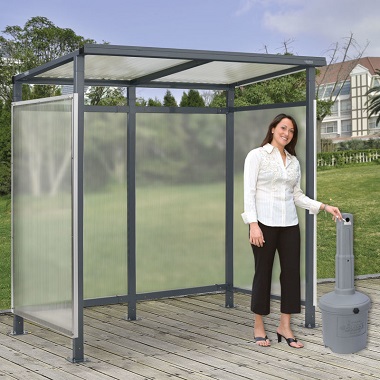
 “We know that many local businesses have relied on outdoor space to meet social distance requirements and increase seating capacity. This grant funding is intended to help our businesses through the winter months,†said Salem Mayor, Chuck Bennett.
“We know that many local businesses have relied on outdoor space to meet social distance requirements and increase seating capacity. This grant funding is intended to help our businesses through the winter months,†said Salem Mayor, Chuck Bennett.


